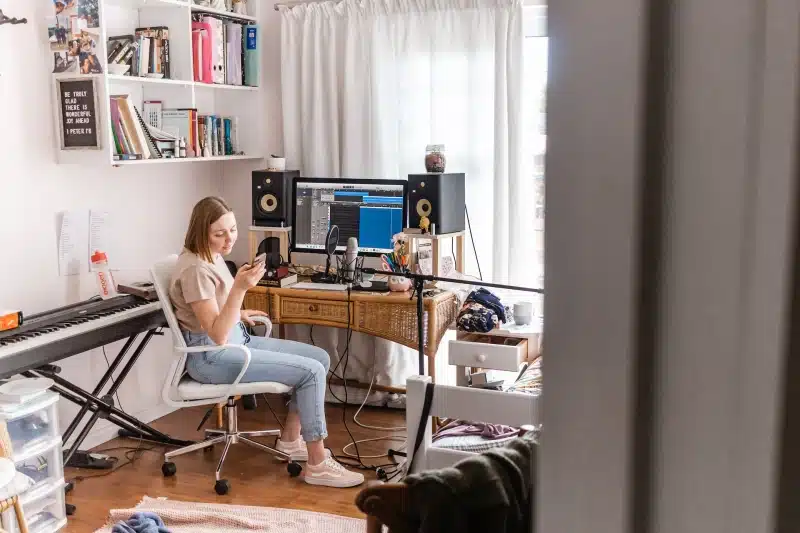
Do you have an extra room in your home, and you’re not sure what to do with it? If you love recording and mixing music, consider transforming it into a studio! Below, we offer the basics of turning a bedroom into the home recording studio of your dreams.
Image Source: unsplash.com
Obviously, the first thing you’ll need in a recording studio is enough space to fit all the equipment and items you’ll need. A recording studio must have enough space to fit:
You’ll need all these things to turn a bedroom into a recording studio, plus enough space left over to fit enough people to perform and record properly! You’d be surprised at how people can turn even the smallest spaces into recording studios, but more space is always better.
When choosing a space, sturdy wall materials, like brick or cement, are ideal for reducing sound from entering the space and ruining recordings.
Next, if you’re going to have a recording studio in your home, you’ll need to do some soundproofing. You can pay for expensive soundproofing materials to coat the room, but there are many DIY ways to soundproof a room.
First, you’ll have to understand the science of soundproofing and its key components: noise reduction and absorption. Stocking the room with carpet and rugs will help absorb the sound, and even houseplants and books can help sound absorption and reduce echo. If you have a drum kit for the studio, consider a drum shield with a plexiglass barrier for a quieter studio and better sound on recordings.
It’s also wise to divide the bedroom into separate stations—one for the engineer to mix and work and the other for recording. Not everyone has the space or dimension to divide a bedroom, but if you do, investing in dense room dividers will improve your organization and recording quality.
If this recording studio is going to be your personal space where you record and mix audio yourself, dividing the workstations isn’t much of a concern. But if you want this to be a communal recording studio for the entire household, friends, and other musicians, you’ll want clear distinctions between the work and recording sections.
We hope our brief guide helps you on your music-making journey. Keep our tips in mind, and you can transform any run-of-the-mill spare room into a music-making factory!
You spend a lot of time in your home, so it’s important to create a…
If you love a modern house vibe, you can find several easy ways to update…
Are you looking to spruce up your home without breaking the bank? Home improvements don’t…
Florida, also known as the Sunshine State, boasts a vibrant real estate market filled with…
A backyard fireplace is the perfect feature to take any outdoor space up a notch.…
The kitchen, often referred to as the heart of a home, is where both meals…